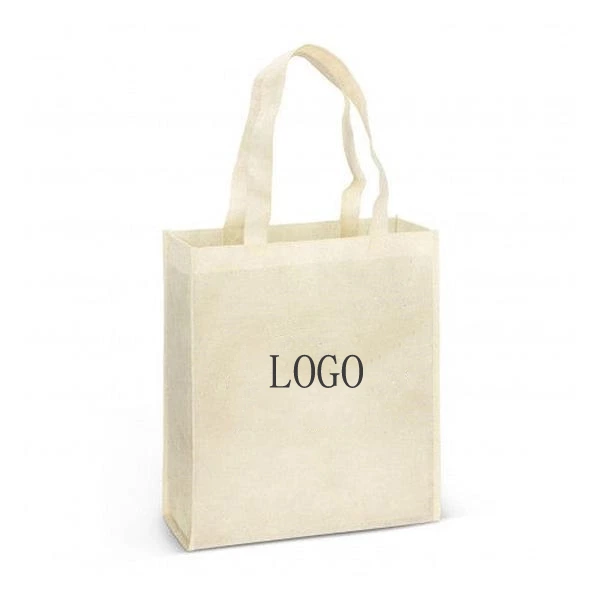Non-woven Shopping Bag Production Process
Non-woven Shopping Bag The production process includes multiple links, including raw material processing, molding, surface treatment and post-production. Environmental protection standards and product quality must be ensured during the production process. Each process is closely linked. The following is a detailed process description.
The selection of raw materials directly affects the performance of the finished product. Polypropylene particles, as the main raw material, need to undergo a melt index test to ensure that the fluidity meets the spinning requirements. Some products use a mixture of polyester and viscose fibers to enhance the flexibility of the fabric. The masterbatch addition process requires precise control of the masterbatch ratio, and a twin-screw extruder is used to achieve uniform dispersion to avoid color difference. During the raw material pretreatment stage, polypropylene particles need to be dried in an oven at 80°C for 4 hours to remove moisture and prevent bubbles from forming during the spinning process.
The fiber web forming process is divided into two types: dry and wet. The dry process uses a carding machine to comb the fibers into a web, and the speed of the carding roller is controlled at 800-1200 rpm to form a fiber web structure of 20-50 g/m2. The spunlace reinforcement process uses high-pressure water flow, with a water pressure range of 100-400Bar and a water flow aperture of 0.1mm, to combine the fibers through three-dimensional entanglement. The hot rolling process sets a three-roll hot press, with the upper roller temperature maintained at 160℃, the middle roller at 180℃, and the lower roller at 150℃. The pressure is adjusted to 5-8MPa to ensure that the fiber mesh is fixed and the surface is flat.
The printing process needs to consider the complexity and durability of the pattern. Screen printing uses a 300-mesh nylon screen, the ink viscosity is controlled at 12-15Pa·s, the scraper angle is adjusted to 75°, and after printing, it enters a 60℃ hot air circulation drying tunnel for 3 minutes. Release paper is required for the thermal transfer process, the transfer temperature is set at 200℃, the pressure is 0.3MPa, and the contact time is maintained for 15 seconds. The UV curing equipment is equipped with a mercury lamp with a wavelength of 365nm and an irradiation intensity of 800mJ/cm² to ensure that the ink is completely cross-linked.
The cutting process uses a CNC cutting bed, the blade temperature is maintained at 50℃ to reduce burrs, and the dimensional error is controlled within ±1.5mm. The sewing workshop needs to adjust the parameters of the industrial sewing machine, set the stitch length to 2.5mm, use a No. 16 machine needle, and adjust the suture tension to 300cN. The handle is reinforced with an X-type suture, and the needle is returned at least 3 times. The load-bearing test must reach 15kg for 1 minute without breaking.
Finishing includes surface treatment and functional addition. Antistatic treatment uses an impregnation method, with a finishing agent concentration of 3%, an impregnation rate of 80%, and drying at 120℃. Fluorine compounds are used for waterproof processing, the coating thickness is 0.02mm, and the hydrostatic pressure test value must be greater than 5000Pa. Ultrasonic welding is used for three-dimensional molding, with a frequency of 20kHz, an amplitude of 40μm, a welding time of 0.5 seconds, and a weld strength that is greater than 70% of the material body strength.
Quality inspection runs through the entire process. Raw materials are tested for melt index upon entry into the factory. The longitudinal breaking strength of spunbond fabrics must be ≥35N/5cm and the transverse breaking strength must be ≥30N/5cm. Finished product testing includes a drop test. The product is loaded with 8kg items and falls freely from a height of 1.2m three times without damage. Environmental testing is based on the GB/T 21661 standard. The biodegradability rate of degradable materials must reach more than 90% in 180 days.
The maintenance of production equipment directly affects the stability of the process. The carbon deposits on the die of the screw extruder must be cleaned every month, and the surface of the hot rolling roller must be mirror polished every week. The seals of the high-pressure pump of the spunlace equipment must be replaced every quarter to ensure that the pressure fluctuation does not exceed ±5%. The workshop environment control requires a temperature of 25±2℃ and a humidity of 55±5% to reduce static electricity.
Environmental protection measures include the treatment of three wastes. The scraps are processed into 5mm particles by a crusher, and the remixing ratio does not exceed 15%. The waste gas treatment uses an activated carbon adsorption tower, and the VOCs removal efficiency reaches 95%. The water circulation system is equipped with a 50μm filter, with a daily processing capacity of 20 tons, and the COD value of wastewater is controlled below 80mg/L.
Degradable PE bags are used in the packaging process, with a folding size error of ±3mm, 50 bags per box, and an environmental protection logo printed on the box. Storage requires stacking 15cm from the ground to avoid direct sunlight, and the shelf life is marked with 18 months. The transport vehicle is equipped with a rainproof cloth, and the stacking height does not exceed 1.5 meters to prevent extrusion deformation.
The process optimization direction includes energy-saving transformation, such as the heat recovery system can use the waste heat of drying exhaust gas for raw material preheating, reducing energy consumption by 15%. In terms of intelligent manufacturing, an online monitoring system is installed to collect spinning diameter data in real time, and the drafting speed is adjusted by PID to control the gram weight deviation within ±2%. The research and development of new materials focuses on the development of PLA and PBAT bio-based materials, maintaining tensile strength while improving degradation performance.
